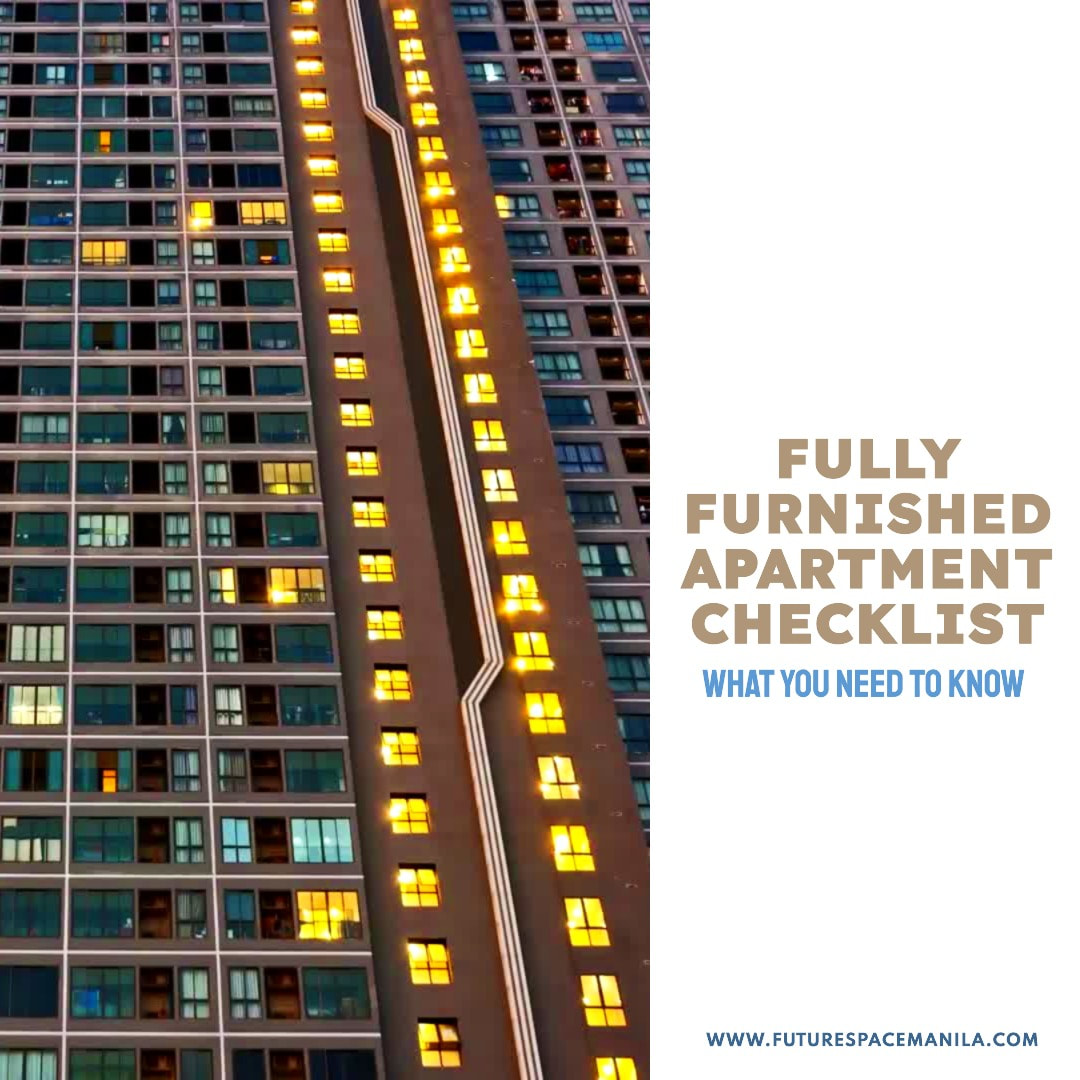|
Despite the rising living expenses in Manila, the Philippines' capital city is still a popular choice among locals and expatriates when it comes to choosing a place to live in. The city center offers a vibrant and comfortable life as it is near most places of leisure activities and major business districts. But do the rising transportation costs and food costs as an impact of inflation make living in Manila worth it if you compare the cost of living in other major cities in Southeast Asia?
One factor to look at would be people's lifestyle demands and the average salary they earn to cover the monthly cost of living expenses entailed by that lifestyle. According to Salary Explorer, the median or average monthly salary of an average person working in Manila is 53,200 PHP (before taxes). The lowest average salary one can earn in Manila is typically 13,500 PHP and the highest average salary is 238,000 PHP. Another salient factor to consider is the estimated monthly costs that cover rental costs or shelter, transportation costs, food costs, utility bills, and healthcare. Of course, a single person would have an easier time covering the average monthly cost and still save money. A breadwinner for a family of four will have to have to consider more than twice the average monthly cost. How much salary do you need to live comfortably in Manila? According to Filipino Wealth, to live comfortably in the Philippines, a single person will be able to cover the basic cost of living plus miscellaneous and leisure allowance if he or she has a salary of around 30,000-40,000 PHP. Choosing to live in Manila, however, will cost higher by around 10,000-20,000 PHP due to higher rental costs, transportation costs, and food costs. This means to live comfortably in Manila, one must earn around PHP 50,000. This means that a person earning the average minimum wage of 13,500 PHP will be struggling to make ends meet or will have to take on multiple jobs. How much does a family of four (estimated) monthly costs? A breadwinner needs to cover at least 94,000 to 111,574 PHP for four people to live comfortably in the metropolitan area. Daily expenses aside, the higher cost of living is due to higher rental rates for a two bedroom apartment or a three bedroom apartment compared to a one bedroom apartment. Rental costs are also affected by which area in Manila you live in. The closer you are to a business district, the higher the expenses if you compare cost to remote areas. How to live comfortably in Manila (and save money at the same time) Your monthly income will naturally impact how comfortably you live. While choosing a studio apartment in Makati will cost more money than a one bedroom apartment in Pasay, being near a central business district will also have its perks like cheaper transportation costs when commuting to work, saving on energy and time (especially during rush hour), and access to the best medical care. Keep in mind that a higher salary also requires more responsible financial planning. Because living expenses in Manila is high and volatile, having a contingency fund to cover an unexpected increase in monthly costs is a must. Here are tips to help you save money and maintain your lifestyle: Have a budget and stick to it It's easier not to overspend when you have your monthly estimated costs budgeted. Planning out every detail of your daily, weekly, and monthly expenses helps you keep track of how much you spend and save. Have your go-to local markets and shopping areas It's easy to get carried away by the ambiance in Manila's high-end malls. While it's nice to window shop and lounge around in those luxury places, knowing where to get cheaper groceries in local stores and shopping areas helps you spend less than necessary monthly. Watch out for sales and good deals Being financially savvy means spending only on what you need. When it comes to your "wants," timing is everything. Be in the know when annual sales of brands you love are coming up. Waiting for better deals online is also a great option when it come to spending outside your monthly costs. Be a wise commuter When push comes to shove and fuel prices keep on hiking up, having plenty of commuting options will help you save money. Instead of succumbing to the price surge of ride-hailing apps or filling the gas tank even though the fuel hike is out of your budget, you can choose to walk and stretch your legs especially when your destination is nearby. Riding via a bicycle is also a great way to improve on your cardio. Knowing shortcuts or leaving home ahead of the traffic jam are all ways to be a wise commuter. Think long-term and start investing in your own home Starting to invest in your own home is a great long-term plan when it comes to saving. Having to pay for rent for the rest of your life, might not be sustainable especially when you plan to retire. Also investing in residential and commercial properties is also a nice way to future-proof your life. Instead of spending on luxury items, put your money on investments. This is an excellent means of ensuring you will live comfortably in the future.
0 Comments
Don't we busy bees all dream of a chore-free weekend where we can embrace solitude or dedicate free time to activities that recharge us? Instead of getting the rest we need, unfortunately, a Saturday morning or Sunday night is spent on cleaning tasks.
Let's face it. As soon as you begin your first meeting on a Monday, the weekday just flies by until you turn in one last report on Friday night. There's hardly time to fit in a cleaning schedule for all those household tasks. Time is precious. So, if you want to cross off all the chores by Sunday night, it's either you seek a cleaning service that offers the expertise of a professional cleaner, or come up with a daily cleaning schedule that dedicates a few minutes to run errands or accomplish a cleaning task. If you don't have the budget to get the cleaning service of professional cleaners, check out this daily to do list that will help you save time and achieve significant progress in reclaiming extra time on weekends. Daily Cleaning Schedule It can be hard to stick to a rigid cleaning schedule, so feel free to keep this to do list flexible from Monday to Friday depending on your work commitments too. Go ahead mix it up. The key is to dedicate 20 to 30 minutes every day to most parts of your household. You may also split the cleaning tasks among members of the household so all of you can have free time during the weekends. Note that not the whole house is commonly occupied by you or your household members. High-traffic zones are commonly used rooms like the kitchen and bathroom so make sure to have a go at these each day to avoid a deep clean every weekend. Kitchen
Bathroom
Bedroom
Living Room
Getting the help of a professional cleaner weekly won't be necessary if you and your family members are on the same page when it comes to having your house cleaned daily with these tips. Yes, you can finally have your life on weekends if you put in a few minutes or an hour daily to housework. Weatherproof home features are necessary to install in homes located in a tropical country like the Philippines. While Filipinos have the luxury of basking in the sun during summer, the rainy season brings torrential downpours and strong winds that can damage an entire house. The typhoon season lasts for months so installing weatherproof home features like storm shutters and storm windows to withstand strong winds can bring peace of mind to homeowners. If you're planning to rebuild or build a new home, it's best to educate yourself on the best practices to weatherproof it especially if you want it to withstand the tropical climate in the Philippines. For starters, consider these weatherproof home features a must to ensure your property holds well during the cool dry season of the country. Storm shutters and storm windows Heavy rains are expected to worsen as the world battles climate change, and the Philippines is no exception. Because the country experiences several typhoons throughout the year, preventing water and high velocity winds from penetrating or shattering windows should be top of mind for homeowners. Adding heavy-duty storm shutters and typhoon resistant windows will surely prepare your home for stormy conditions. Impact resistant windows Among of the vulnerable parts of a home are its windows. Wind direction can be hard to predict during a typhoon but to prevent window glasses from being shattered into pieces by strong winds, typhoon resistant windows are a priority in weatherproofing a home. Installing impact resistant windows can prevent injuries as well when windows break since they are made out of tempered glass that break into tiny pieces when shattered. Choose ones furnished with protective film that keep the window intact when high-velocity winds come. Door draft stoppers Door draft stoppers are installed on the tops and bottoms of doors to cover the gap between the floor and the door. This prevents cold air leaks, if your home has air conditioning, and can prevent water from coming when experiencing abundant rainfall when flood water is likely. Draft stoppers can save you energy costs and protect your home during typhoon season. Four sided roof While not commonly used in the Philippines, the structural design of four sided roofs is able to withstand heavy rains and gusts of wind that can pass smoothly through it instead of ripping away the entire thing. Of course, this needs to be properly installed via welding to ensure its sturdiness in varying weather conditions. Weather-resistant house exteriors In weatherproofing a home, the safety of its inhabitants is the top concern which is why utilizing resilient materials to make up the structure is key. Shielding the home against wind, rain, the heat of the sun, and from fire are important to keep in mind. Providing good insulation to withstand the hot and cool weather is energy efficient and can save your wallet from higher utility bills. Owning a home is a serious investment and it must be protected at all costs. Don't settle for cheap materials when building your new home and don't choose band-aid solutions when rebuilding it. Settling into an empty new home comes with the daunting task of buying and assembling furniture. When you have the luxury of time and money, shopping for a new bed frame or having a dining table or coffee table customized to fit a new living space can actually be a worthwhile nesting experience. However, this is not the case for people who would rather save time, energy, and upfront costs that come with choosing a fully furnished apartment. Fully furnished apartments are hassle-free, especially when your work requires you to move around a lot or when you're newly independent and have not previously invested in your own furniture. A fully furnished unit is usually equipped with furniture and appliances, so lifting and assembling furniture is automatically off your to-do list. But before the obvious appeal of a fully furnished apartment gets to you, it's important to know what to expect exactly prior to securing it. Note that just because an apartment is advertised as "furnished" does not mean it is a "fully furnished" unit. Should it have a coffee maker, cooking utensils, bathroom essentials, or a dining room table? Use this fully furnished apartment checklist to guide you in maximizing that rental agreement. What is a furnished apartment? Basically, a furnished apartment is outfitted with necessary home items that make a space functional and comfortable to live in. Prior to securing the home, it is important to ask the landlord or real estate broker how furnished the apartment is and it comes in three different levels. Semi furnished apartments These only come with essentials that usually include a bed frame and mattress, kitchen table, dining table with chairs, plus a couch or sofa. Often, but not always, semi furnished apartments also have major appliances and bathroom items like shower curtains. The place may also include trash and recycling bins and window curtains or drapes. Make sure to ask your landlord if these apartment essentials are provided, otherwise, you might have to come up with a first apartment checklist and shop for each. Fully furnished apartments Fully furnished apartments save newly moved-in people from a complex moving process and the expenses on home necessities. These fully furnished apartments normally come with a fully equipped kitchen, bedroom, bathroom, and living space. Use this comprehensive checklist to make sure you're getting the most out of your fully furnished apartment.
Move in ready apartments should be able to cover all household items and accessories so no urgent shopping is necessary on the day you move in so you can ultimately save money. Bedding, dish ware, and decorative items are covered. You may also check on the following items:
Of course, choosing a furnished apartment on any of the three levels will assure you of a stress free moving in process. No furniture or appliance costs to think of, even hiring movers will not be part of your list of tasks. While this may come as a huge relief, you still have to watch out for a few things to get the most of your rental agreement. Here are a few tips when finding a fully furnished apartment suited to you. 1. Check for extra amenities and their corresponding costs. This would usually depend on what complex or establishment your unit stands on. Check for the following:
2. Review the length of the lease agreement and how much advance pay and deposit it entails. Don't get carried away easily by a fully furnished apartment that has everything you need. A lease term can make or break your full experience. Usually, lease terms are year-long so be completely sure that you will be able to cover a year's worth of rent not just financially but work-wise. Will you be moving anytime soon? Factors like family and work come into play when it comes to this. Opt for a flexible lease if you cannot forecast how the next months will go for you. 3. Know your non-negotiables when choosing your home. We all have different personalities and lifestyles that we adhere to. When selecting a fully furnished apartment, consider its square footage, its number of rooms, and storage space. For someone who cooks, a big kitchen space would be favorable. For someone with a lot of clothes and shoes, the size of the closet would be a top concern. At the end of the day, your preferences in a home would matter most. So make sure to make to and review this comprehensive apartment checklist and tips again before you invest your time and resources to a fully furnished apartment. To a property owner, the safety of a tenant in a rental property is paramount. Equally important is securing the protection of the rental property to ensure longtime profit from it, increase its rental value, and avoid damages and other risks.
Owning rental properties are profitable personal assets that come with risks such as those produced by the rental property itself. For instance, as a property owner, the law holds you accountable for personal injuries incurred by a tenant within the rental property. Outside risks also come into play when your equity as a property owner is threatened by lawsuits, which could affect your real estate property investment. This is why protection strategies for rental properties exist in the form of landlord insurance, rental agreement, or lease agreement, to protect business and personal assets from creditor claims. It is a must for property owners to educate themselves and use a combination of these property protection ways to limit risks in a single property asset. It is recommended that property investors or landlords have a go-to legal advisor and finance expert to discuss crucial matters such as local laws, legal requirements, and legal expenses entailed in developing a rental property protection plan. Here are basic strategies to put in place in order to protect your real estate property investment: 1. Prioritize safety Prioritizing the safety of your current and prospective tenant is the best way to avoid a lawsuit or insurance claims for an injury incurred on your rental properties. It's best to be aware of the basic legal requirements for repairing and maintaining the property. When repair requests are reported by tenants, promptly respond at once. Initially address hazards such as molds, asbestos-containing materials, carbon dioxide, and lead. Install carbon monoxide detectors, maintain HVAC systems, and leaks immediately. 2. Hire a property manager Investors who are handling several rental properties or who do not live near their rental should consider seeking the help of a property manager. Having an official point person can help with concerns on property maintenance, security, and sorting out an problems that an investor might not be able to address at once. Spot checks on the property can be done regularly by property managers to ensure that the rental is in good condition. 3. Hold tenants accountable by requiring security deposits Requiring a security deposit from a tenant motivates them to keep a property in perfect condition. This deposit is made by tenants to secure the payment of rent and utilities. The said security deposit can also be used to repair damage if your rental agreement directly states it. Having a damage deposit ensures funds for the repair and replace of damaged assets beyond reasonable wear and tear. 4. Screen tenants before signing a lease agreement Landlords can avoid irresponsible tenants by doing a background check on them prior to doing business with them. Setting an interview with interested applicants or asking for character references from employers will give you a chance to decide if you can trust or refuse them. 5. Get the right rental property insurance Reduce the risk of unprecedented costs by taking out the right insurance policy for your specific needs. The best rental property coverage should be able to protect you as the landlord and your property assets, including furnishings within the rental property. Rental property insurance or landlord insurance should be able to offer the following:
Reality check: we are always meant to face price hikes from food and fuel costs to the monthly electricity bill. The cost of basic needs perennially increases over time due to inflation and the volatile supply and demand chain.
In fact, in January this year, the Philippines' annual inflation reached a 14-year high. Unfortunately, fixed incomes won't be enough to cover the rising cost of living so smart and simple tips to save on monthly expenses, including food and energy consumption are much needed. In the Philippines, the monthly electricity bill is infamously high whether in offices or households. Being a tropical country, the heat is something to beat. Most of the electricity consumption goes to the air conditioner or refrigerator use. Prioritizing minimum energy usage is a must in every household. The goal is to reduce energy consumption in order to save money and not break the bank. Here are energy efficient means to keep the Meralco electric bill from taking up the majority of your utility bills. Tips and Hacks to Save Energy Consumption at Home 1. Fix insulation and airflow The best way to consume electricity less is to ensure cold air readily flows in your home. Proper air flow would mean using your air conditioners at a minimum even during warm weather, so make sure to improve the insulation within your home. The material of your ceiling matters as well as the height of your ceiling. The goal is to reduce your home's heat retention to make your household use the air conditioning unit less. 2. Take advantage of natural light Saving electricity comes easy when you maximize the direct sunlight that streams in your home. Natural sunlight doesn't just brighten one's mood, it also lightens up any room efficiently. Open up your curtains or blinds during the daytime when working on tasks so you won't have to turn on the lights. This will surely tame those electric bills. 3. Use LED lights One surefire way to ensure your home's energy efficiency is by opting for LED lights over incandescent bulbs. LED lights last longer than incandescent bulbs. They also produce less heat and are proven to reduce energy usage by up to 50 percent. 4. Use a smart power strip If you have multiple appliances in one area of your home, plug them all into one power strip to save electricity. This device can detect when gadgets or appliances are not in use and ensure these electronics aren't taking up more energy when in standby mode. You can also easily turn off all devices in one go when leaving home. 5. Use energy efficient appliances Manufacturers of home appliances are now more aware of consumers' need to save energy and save money. For instance, inverter equipped appliances can efficiently control its own electricity consumption. Your home's air conditioning unit, washing machine, and refrigerators can help you save energy through inverter technology. Inverter appliances also make the appliances more durable because it works their motors less. Pro-tip: check the energy rating of an appliance before purchase. This would be a good indicator of their energy saving ability. 6. Use the timer to turn off the air conditioning unit Setting the timer of air conditioning units for a two-hour use will assure you of a higher electricity bill next month. All you have to do is to learn how it works and consistently make use of it. Using the timer of your television or even your electric fan to ensure it is not consuming energy all night can do well to reduce your energy bill. 7.Constantly check for air gaps in your home If you rely on your air conditioner 24/7 to beat the warm air, checking for air gaps in all areas of your home is crucial. Make sure cool air from your air conditioner or electric fans is utilized well by sealing off places where the cool can escape. This will ensure more energy is saved. 8. Save energy when you cook Among the best energy saving tips is to consume less electricity at home by using an induction cooker. An induction assures heat is directly transferred directly to your kitchenware without any waste. This saves money on gas bills and is also safer to use since you avoid using fire. If you find it a hassle to use cookware made for induction tops, you may use copper-bottom and cast-iron pots and pans to heat up and retain warmth more efficiently than stainless steel ones. A wise way to defrost frozen food is to take it out of the fridge ahead of time as opposed to utilizing the microwave's defrosting option. 9. Charge gadgets smartly To ensure less energy use, make sure to charge your phones, laptops, tablets, and other gadgets only when their batteries are at 10 to 20%. This will lessen the constant plugging of chargers especially when gadgets still have sufficient energy. A charging device, when plugged in, still consumes energy that adds up and impacts your monthly bills. 10. Regularly monitor your electric meter Be mindful of how much energy you consume monthly. This will give a good gauge of when your household is consuming more energy than it should. Of course, this would mean learning to read an electric meter. Although this will take effort, it will certainly benefit you in the long run. Recording your monthly bill and getting updated about the current power rates are all part of keeping track of staying on top of your electricity bill. Ways to save electricity at home does not only boil down to using air conditioners or electric fans less. Sometimes, the simplest hacks such as maximizing your home's natural lighting or using the right light bulbs will keep your Meralco bills from hurting your wallet. |
Categories
All
Archives
January 2024
|







 RSS Feed
RSS Feed